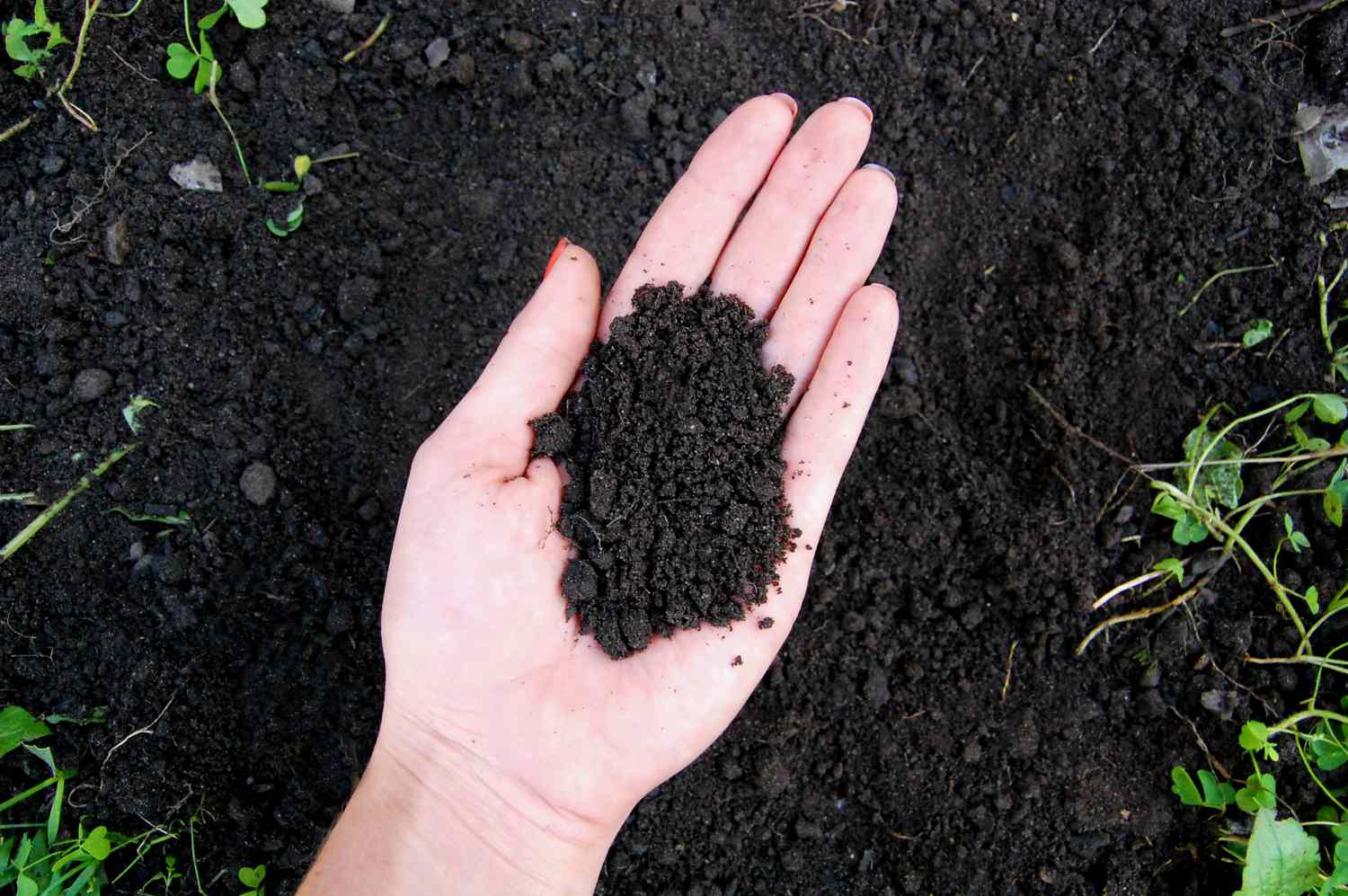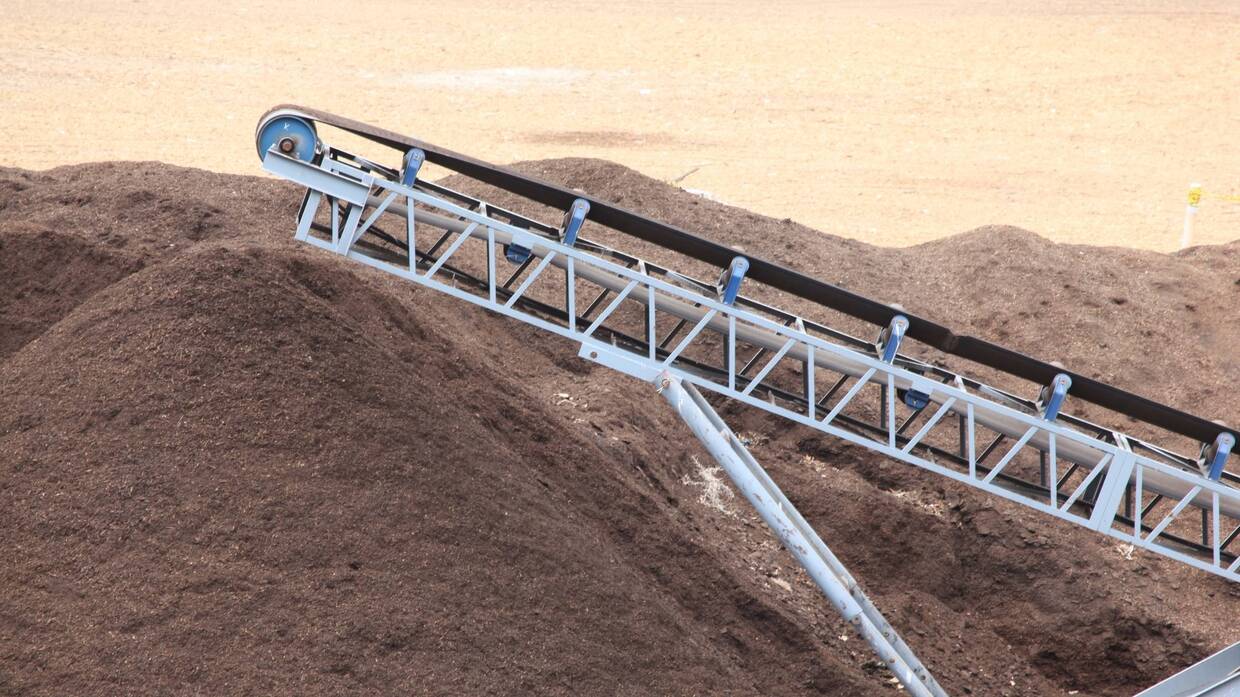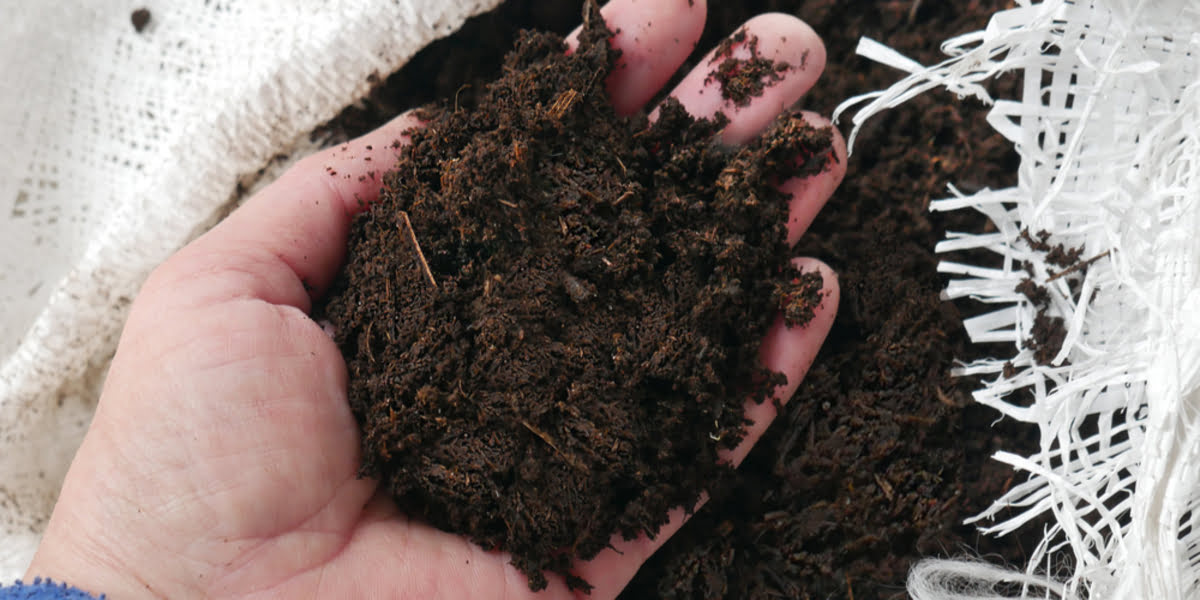Home>Gardening Basics>Understanding Soil>How Does Topsoil Form?


Understanding Soil
How Does Topsoil Form?
Modified: February 8, 2024
"Understanding soil formation: Discover how topsoil is created and its essential role in gardening and agriculture. Learn the process of how topsoil forms naturally over time."
(Many of the links in this article redirect to a specific reviewed product. Your purchase of these products through affiliate links helps to generate commission for Chicagolandgardening.com, at no extra cost. Learn more)
Table of Contents
Introduction
Welcome to the fascinating world of soil! As an SEO expert with a deep understanding of soil, I’m excited to share with you the wonders of topsoil formation. Soil is an incredible ecosystem, playing a vital role in sustaining life on Earth. It provides nutrients for plants, acts as a natural filter for water, and serves as a habitat for countless organisms.
At the heart of every healthy soil ecosystem is topsoil. But have you ever wondered how topsoil is formed? What processes and factors contribute to its development? In this article, we will explore the intricate world of topsoil formation, from the geological processes that shape it to the vital roles that weathering, organic matter, and biological activity play in its creation.
Understanding how topsoil forms is crucial not only for soil scientists and researchers but also for farmers, gardeners, and anyone interested in sustainable agriculture and land management. By gaining insight into the processes behind topsoil formation, we can make informed decisions to protect and preserve this invaluable resource.
So, let’s dive into the world of soil and uncover the secrets of topsoil formation!
Definition of Topsoil
Before we delve into the processes of topsoil formation, let’s first establish a clear understanding of what topsoil actually is. Topsoil refers to the uppermost layer of soil, typically found within the first few inches to a foot of the Earth’s surface. This layer is rich in nutrients, organic matter, and microorganisms, making it a crucial component for plant growth and development.
Topsoil is often distinguished from other soil layers based on its dark color, which is a result of the accumulation of organic matter. This layer is teeming with life, housing a diverse community of bacteria, fungi, earthworms, and other organisms that contribute to vital soil processes.
The composition of topsoil varies depending on location and environmental factors. In some areas, topsoil may be comprised of sandy particles, while in others it may contain more clay or silt. The texture and structure of topsoil are essential in determining its water holding capacity, drainage capabilities, and nutrient-holding capacity.
Another important aspect to consider when defining topsoil is its horizons, or layers. In a soil profile, topsoil is typically identified as the A horizon. This is the uppermost layer that has undergone the most weathering and biological activity, resulting in the accumulation of organic matter and nutrient-rich soil particles.
Overall, topsoil is a crucial component of healthy soil ecosystems and plays a vital role in supporting plant growth and sustaining life on Earth. Its unique characteristics and composition make it a valuable resource that needs to be protected and managed sustainably to ensure its long-term viability.
Factors that Influence Topsoil Formation
Topsoil formation is a complex process that is influenced by various factors. Understanding these factors is key to comprehending how topsoil develops and evolves over time. Let’s explore some of the primary influences on topsoil formation:
- Parent Material: The parent material of soil refers to the underlying geological material from which the soil is formed. It can range from rocks and minerals to clay, silt, sand, or a combination of these. The composition of the parent material influences the fertility, texture, and nutrient content of the resulting topsoil.
- Climate: Climate has a significant impact on topsoil formation. The combination of temperature, precipitation, and the frequency and intensity of weather events determine the rate of weathering and erosion of the parent material. For example, in regions with high rainfall, topsoil formation may be faster due to intense weathering, while in arid regions, it may take longer due to slower weathering and reduced organic matter accumulation.
- Time: Time is an essential factor in topsoil formation. It takes thousands of years for organic matter, minerals, and nutrients to accumulate in the topsoil layer. Over time, weathering processes and biological activity contribute to the development of a fertile and nutrient-rich topsoil layer. The longer the soil has been exposed to these processes, the more developed the topsoil becomes.
- Biological Activity: The activity of plants, microbes, and other organisms plays a crucial role in topsoil formation. Plants release organic compounds through their roots, which contribute to soil organic matter. Microorganisms, such as bacteria and fungi, break down organic matter and release nutrients that are essential for plant growth. Earthworms and other soil organisms also help in the breakdown and incorporation of organic matter into the soil, improving its structure and fertility.
- Human Activities: Human activities, such as agriculture, deforestation, and construction, can have a significant impact on topsoil formation. Unsustainable land management practices, such as excessive tilling, overuse of chemical fertilizers, and improper erosion control, can lead to the depletion of topsoil and erosion. It is crucial to implement sustainable practices to protect and conserve topsoil for future generations.
By understanding the factors that influence topsoil formation, we can better appreciate the importance of sustainable land management practices and the need to protect this valuable resource. Through responsible stewardship of the land, we can ensure the preservation and enhancement of topsoil for agricultural productivity and long-term environmental sustainability.
Weathering Processes
Weathering plays a crucial role in the formation of topsoil. It refers to the physical and chemical processes that break down rocks and minerals into smaller particles over time. Weathering can be classified into two main types: mechanical (physical) weathering and chemical weathering.
Mechanical Weathering: Mechanical weathering involves the physical breakdown of rocks and minerals into smaller particles without changing their chemical composition. Some common processes of mechanical weathering include frost wedging, where water seeps into cracks in rocks and freezes, causing the rocks to fragment, and abrasion, where rocks are worn down by friction due to wind, water, or other forces.
Chemical Weathering: Chemical weathering involves the alteration of rocks and minerals through chemical reactions. One of the most common chemical weathering processes is hydrolysis, where water reacts with minerals, causing them to break down and form new compounds. Another important chemical weathering process is oxidation, where minerals react with oxygen in the air or water, resulting in the formation of new compounds.
Both mechanical and chemical weathering contribute to the breakdown of rocks and minerals, reducing them to smaller particles that make up the topsoil. These processes create the foundation for the development of nutrient-rich soil by increasing the surface area available for other soil-forming processes to take place.
The rate of weathering is influenced by factors such as temperature, moisture, and the type of rock or mineral being weathered. For example, in humid tropical regions, where temperatures and moisture levels are high, weathering occurs at a faster rate compared to arid regions with low rainfall.
Weathering processes also play a role in soil pH and mineral composition. As rocks and minerals weather, they release ions into the soil, influencing its chemical properties. This, in turn, affects the availability of nutrients to plants and the overall fertility of the topsoil.
In summary, weathering is a fundamental process in topsoil formation. The physical and chemical breakdown of rocks and minerals through weathering processes creates the building blocks of topsoil. Understanding the mechanisms of weathering allows us to appreciate the dynamic nature of soil formation and its essential role in sustaining life on Earth.
Deposition and Accumulation of Organic Matter
The deposition and accumulation of organic matter are integral processes in topsoil formation. Organic matter refers to the remnants of once-living organisms, such as leaves, roots, and dead organisms, that have undergone decomposition. When organic matter accumulates in the soil, it enriches the topsoil layer with nutrients and enhances its fertility.
One of the primary contributors to the deposition of organic matter is the process of litterfall. Litterfall occurs when leaves, branches, and other organic materials fall to the ground and begin to decompose. This process adds a continuous supply of organic material to the soil surface. The rate of litterfall can vary depending on factors such as plant productivity, climate, and the presence of microorganisms involved in the decomposition process.
Once organic matter is deposited, it undergoes decomposition, which is facilitated by microorganisms such as bacteria and fungi. These organisms break down complex organic compounds into simpler forms that can be utilized by plants. This decomposition process releases nutrients and organic substances into the topsoil, enhancing its fertility and creating a favorable environment for plant growth.
Factors that influence the accumulation of organic matter include climate, vegetation type, and land management practices. In areas with high precipitation and moderate temperatures, the decomposition rate may be faster, leading to higher organic matter accumulation. Conversely, in arid or cold regions, decomposition may be slower, resulting in lower organic matter content.
The type of vegetation present also plays a role in the accumulation of organic matter. Plants with a high leaf litter production, such as deciduous trees or grasses, contribute more significantly to organic matter accumulation. Additionally, certain plant species, such as legumes, have symbiotic relationships with nitrogen-fixing bacteria, which further enrich the soil with organic matter and nutrients.
Human activities can also impact the deposition and accumulation of organic matter. Land management practices, such as cover cropping, crop rotations, and the addition of compost or manure, can increase the organic matter content in the soil. Conversely, practices like overgrazing or excessive tillage can lead to the loss of organic matter and degradation of topsoil.
The deposition and accumulation of organic matter are critical for maintaining soil fertility and supporting sustainable agriculture. By promoting practices that enhance organic matter content, we can improve soil quality, nutrient cycling, and water holding capacity, ultimately contributing to the long-term health and productivity of the topsoil.
Biological Activity and Decomposition
Biological activity and decomposition are essential processes in topsoil formation. These processes are driven by a diverse community of organisms, including bacteria, fungi, earthworms, and other soil-dwelling creatures. Through their activities, they break down organic matter and contribute to the nutrient cycling and structure of the topsoil.
Bacteria and fungi are the primary decomposers in the soil ecosystem. They play a crucial role in breaking down complex organic compounds into simpler forms that can be used as nutrients by plants. These microorganisms secrete enzymes that break down organic matter, releasing carbon, nitrogen, phosphorus, and other essential nutrients into the soil. This process, known as mineralization, makes these nutrients available for uptake by plants, promoting their growth and development.
In addition to decomposition, biological activity also enhances the physical structure of the topsoil. For example, earthworms create burrows as they tunnel through the soil, effectively loosening compacted soil and improving its drainage and aeration. The casts (excreta) produced by earthworms are also rich in organic matter, adding to the nutrient content of the topsoil.
The interactions between plants and soil organisms are also vital for topsoil formation. Plants release compounds through their roots that attract and interact with specific groups of microorganisms in the soil. These symbiotic relationships, such as mycorrhizal associations between plants and fungi, enhance nutrient uptake and strengthen the overall health of the soil-plant system.
Human activities can influence biological activity and decomposition in the soil. The use of certain agricultural practices, such as the application of chemical fertilizers and pesticides, can disrupt the natural balance of soil microorganisms, impacting decomposition rates. Consequently, adopting organic farming practices that promote the growth and diversity of soil microorganisms can enhance biological activity and support the formation of healthy topsoil.
Overall, biological activity and decomposition are crucial processes in topsoil formation. The activities of microorganisms, earthworms, and other soil organisms contribute to the breakdown of organic matter, nutrient cycling, and the physical structure of the topsoil. Understanding and fostering these processes can help promote sustainable soil management practices and ensure the long-term health and productivity of topsoil ecosystems.
Human Impact on Topsoil Formation
Human activities have a significant impact on topsoil formation, often leading to degradation and loss of this vital resource. Understanding the ways in which human actions affect the formation of topsoil is crucial for developing sustainable land management practices. Let’s explore some of the key human impacts on topsoil formation:
Deforestation and Land Clearing: Deforestation and land clearing for agriculture or urban development result in the removal of vegetation cover. This can lead to increased erosion, as the protective layer provided by plants is no longer present to prevent soil erosion by wind and water. Without the protection of plants, topsoil is more vulnerable to erosion, resulting in its loss and degradation.
Excessive Tilling: Excessive tillage practices in agriculture can disrupt the natural structure of the soil, leading to the breakdown of soil aggregates and loss of organic matter. Tilling can increase soil erosion and diminish the fertility of topsoil by exposing it to the elements and accelerating the decomposition of organic matter.
Overgrazing: Overgrazing by livestock can lead to the removal of plant cover, leaving the soil exposed and vulnerable to erosion. Without the protective vegetation, topsoil can be easily washed away by rainfall or blown away by wind, resulting in the degradation of the land and the loss of valuable topsoil.
Chemical Use and Soil Pollution: The excessive use of chemical fertilizers, pesticides, and herbicides in agriculture can disrupt soil ecosystems and impair topsoil formation. These chemicals can negatively impact soil microorganisms, essential for decomposition and nutrient cycling, and can also contaminate the soil, affecting the quality and fertility of the topsoil.
Improper Erosion Control: Inadequate erosion control measures, such as the absence of proper contour plowing or the lack of vegetative barriers, can exacerbate soil erosion. Without proper management practices in place to prevent erosion, topsoil can be carried away by runoff or wind, resulting in the loss of fertile soil and a decline in agricultural productivity.
Unsustainable Land Management Practices: Unsustainable land management practices, such as monocropping, lack of crop rotation, and improper irrigation, can contribute to topsoil degradation. These practices can deplete nutrients, disrupt soil structure, and reduce organic matter content, jeopardizing the long-term health and productivity of the topsoil.
It is crucial to implement sustainable land management practices to mitigate human impacts on topsoil formation. Conservation practices like cover cropping, crop rotation, agroforestry, and terracing help to protect topsoil from erosion, enhance organic matter content, and promote sustainable agricultural practices. By adopting these practices, we can preserve and improve topsoil quality for future generations and ensure the sustainable use of this vital resource.
Conclusion
Topsoil formation is a complex and fascinating process that plays a critical role in supporting life on Earth. Understanding the factors that influence topsoil formation, such as weathering processes, the deposition of organic matter, biological activity, and human impacts, is crucial for sustainable land management and ensuring the long-term health and productivity of our soils.
Weathering processes, both mechanical and chemical, break down rocks and minerals to create the building blocks of topsoil. The deposition and accumulation of organic matter enrich the soil with nutrients and enhance fertility. Biological activity, driven by microorganisms and soil-dwelling organisms, facilitates decomposition, nutrient cycling, and the physical structure of the topsoil. However, human activities such as deforestation, excessive tilling, overgrazing, chemical use, and improper erosion control can negatively impact topsoil formation and contribute to its degradation and loss.
To protect and preserve topsoil, it is crucial to adopt sustainable land management practices. This includes promoting practices that enhance organic matter content, reduce erosion, and support the diversity of soil organisms. Conservation practices such as cover cropping, crop rotation, and the use of organic fertilizers can all contribute to the preservation and enhancement of topsoil quality.
Recognizing the importance of topsoil formation and its role in sustaining agricultural productivity, environmental health, and ecosystem resilience is essential. By valuing and prioritizing the conservation of this valuable resource, we can ensure its availability for future generations.
So, let us continue to learn, educate, and implement sustainable practices that protect and enhance the formation of topsoil. Each step taken towards responsible land management contributes to the preservation of this invaluable resource and the long-term sustainability of our environment.









